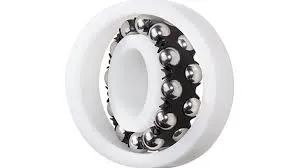
ኅዳር . 26, 2024 00:45 Back to list
Exploring the Features and Applications of 23026 Bearings in Modern Machinery
Understanding the 23026 Bearing A Comprehensive Overview
Bearings are critical components in various mechanical systems, allowing for the efficient movement of parts while reducing friction. Among the many types of bearings available, the 23026 bearing holds a special significance in applications requiring high load capacity, robust performance, and longevity. In this article, we will explore the features, applications, and maintenance of the 23026 bearing, offering insights into its importance in mechanical engineering.
What is the 23026 Bearing?
The 23026 bearing is a spherical roller bearing, typically characterized by its self-aligning properties. It comprises an inner ring, an outer ring, and a set of spherical rollers that allow for radial and axial load handling. The designation 23026 indicates specific dimensions and load ratings, making it a suitable option for various industrial applications.
The spherical rollers provide an advantage over traditional cylindrical bearings, as they can accommodate misalignment and shaft deflection. This feature is particularly important in environments where precise alignment cannot always be guaranteed, thus enhancing the bearing's functionality and lifespan.
Key Features
1. High Load Capacity The design of the 23026 bearing allows it to support substantial radial loads along with moderate axial loads. This capability makes it an ideal choice for heavy machinery and equipment.
2. Self-Alignment One of the standout features of this bearing is its self-aligning nature, which caters to angular misalignment. This trait reduces wear and tear on both the bearing and the shaft, contributing to overall operational efficiency.
3. Durability Made from high-quality materials, the 23026 bearing is built to withstand harsh operating conditions, including high temperatures and corrosive environments. Its robust construction ensures a long service life, which is critical in industrial settings.
4. Versatility This bearing type is highly versatile, finding use in various applications, including construction machinery, mining equipment, and automotive applications. Its adaptability makes it a favored choice among engineers.
Applications
23026 bearing

The 23026 bearing is commonly found in industries such as
- Heavy Machinery Used in the construction and mining sectors, where equipment undergoes extreme conditions and heavy loads. - Agricultural Equipment In tractors and harvesters, it helps ensure smooth operation even when faced with varying loads and speeds. - Wind Turbines As part of the turbine assembly, the bearing enables efficient energy conversion while withstanding significant axial forces. - Automotive Engines and transmission systems utilize this bearing type to manage loads and ensure alignment in moving parts.
Maintenance and Care
To maximize the performance and lifespan of the 23026 bearing, proper maintenance procedures should be followed
1. Regular Inspection Periodic checks for wear, misalignment, and contamination are crucial to ensuring that the bearing operates optimally.
2. Proper Lubrication Adequate lubrication reduces friction and heat generation, which can significantly affect the bearing’s life. It’s essential to use the right lubricant and follow manufacturer recommendations.
3. Monitoring Operating Conditions Keeping a close eye on the operational environment, such as temperature and humidity, can help in anticipating issues that might arise and taking corrective measures in advance.
4. Replacement Knowing when to replace the bearing is as critical as maintenance. Signs of excessive wear, such as unusual noises or increased operating temperatures, should prompt immediate inspection and potential replacement.
Conclusion
In summary, the 23026 bearing is an exemplary component that embodies the principles of efficiency, durability, and self-alignment. Its ability to handle high loads and its versatility across different industries underscore its importance in engineering applications. By understanding its features and following best maintenance practices, industries can leverage its advantages to ensure smooth operations and minimized downtime. As technology advances, we can anticipate even more improvements in bearing design, further enhancing the performance and reliability of equipment across various sectors.
Latest news
-
Spherical Roller Bearings Applications: Heavy Duty, Self-Aligning
NewsAug.30,2025
-
Premium Deep Groove Ball Bearings | High Speed & Reliability
NewsAug.29,2025
-
Durable Scaffolding Clamps - Secure & Reliable Tube Connectors
NewsAug.28,2025
-
Common Failures in Thrust Ball Bearings and Solutions
NewsAug.22,2025
-
How Tapered Roller Bearings Can Take Shock Loads
NewsAug.22,2025
-
Angular Bearings in High-Precision Spindles
NewsAug.22,2025
